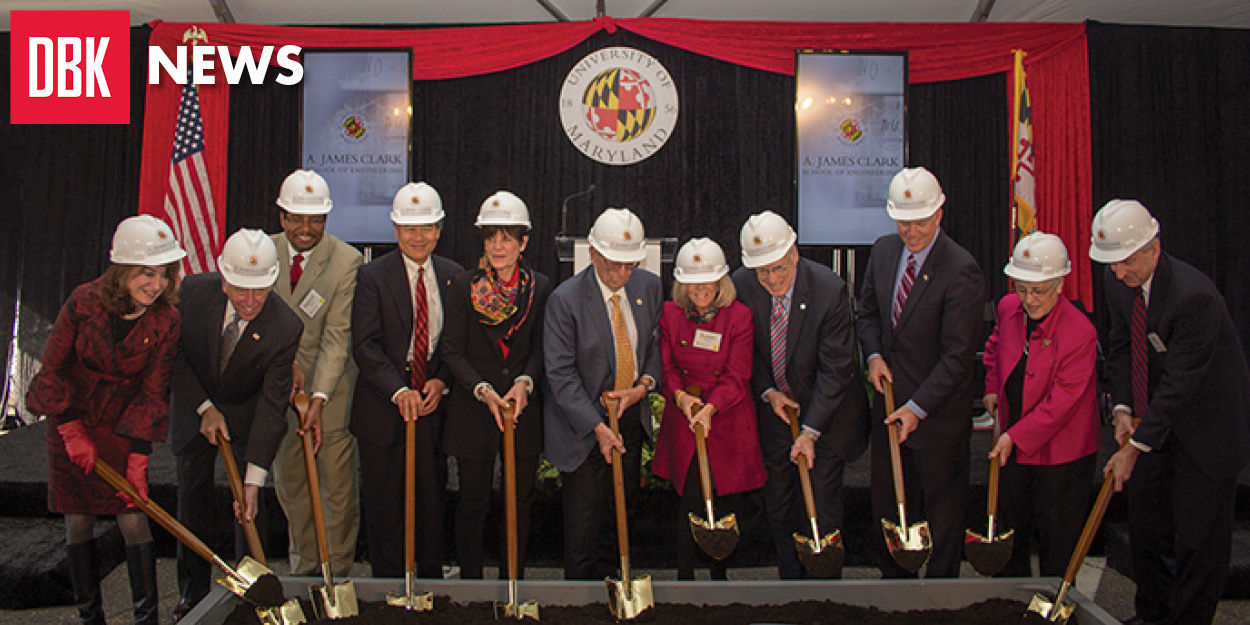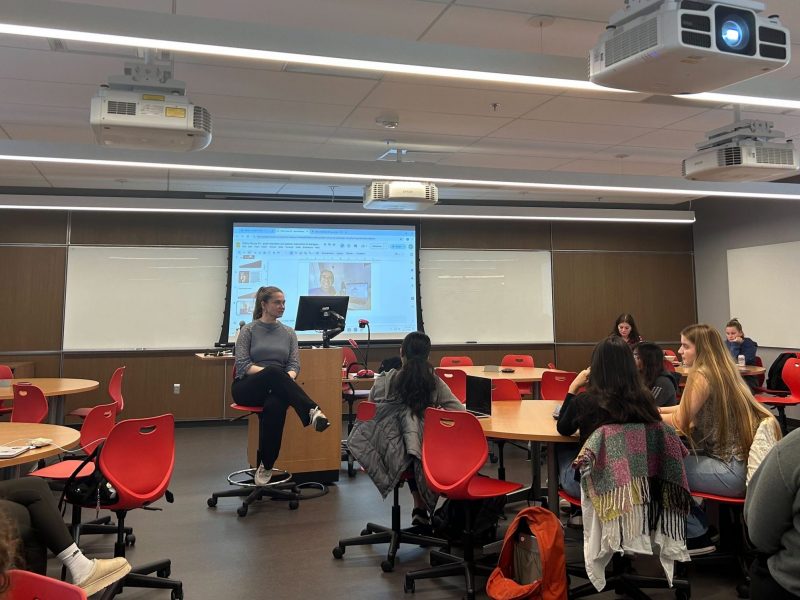
Distinguished guests and administrators break ground for the new James A. Clark Engineering building groundbreaking ceremony on Nov. 21, 2014.
As the sound of pile driver at the Edward St. John’s Learning and Teaching Center construction site boomed across Campus Drive, officials broke ground Friday morning on another project: a bioengineering building aimed at forwarding research in a relatively new field.
A. James Clark Hall, which will be located on the former site of the Paint Branch Parking Lot behind the Jeong H. Kim Engineering Building, will be a center for the bioengineering department.
The department began in 2006, but university officials said this field of study would increase in importance for the university and the state in the near future.
“Our state has been a bioscience, bioengineering state for a long time,” engineering Dean Darryll Pines said.
With the nearby National Institutes of Health, Food and Drug Administration and other research centers, universities and hospitals conducting bioengineering research in the area, the engineering department decided it was time to launch a bioengineering major a few years ago. Since then it has rapidly expanded, Pines said.
“We realized that it was moving so quickly that we needed special laboratories and special environments like this building to really do the next level of research and development,” he said.
Set to open in 2017, the Clark Building will have 184,000 square feet of floor space, which will include a lecture hall, six other classrooms, labs, office space, a “makerspace” for 3-D printing and a vivarium for animal research.
All of this will bring together students and researchers from medicine, public health, engineering and science to work on the next generation of biomedical devices, Pines said.
“This will be a transformative, world-class facility, where world-class research and innovation will be performed by the world-class students, faculty and staff of the A. James Clark School of Engineering,” university President Wallace Loh said at the groundbreaking ceremony.
Noting that this was not “presidential hyperbole,” Loh said the engineering school was ranked No. 22 among engineering schools in the U.S. News & World Report this year . The Fischell Bioengineering Department was ranked No. 34 among bioengineering programs.
U.S. Rep. Steny Hoyer (D-Md.) agreed the new facility would help better the fields of bioengineering and health care after he praised the engineering that kept the ceremonial tent warm on the cold late-autumn morning.
“Not only will this university be better, but … this university will make life different for people here in this country and around the world,” Hoyer said.
Brit Kirwan, who soon will step down from his post as University System of Maryland chancellor, said the building was made possible by the generosity of A. James Clark and Robert E. Fischell, who donated $15 million and $6 million to Clark Hall, respectively.
“If this is, in fact, my last groundbreaking ceremony, I could not have asked for one that meant more to me because of the two people we honor here today,” Kirwan said, noting his friendship with Clark and Fischell. He said naming the university’s engineering school after Clark might have been one of the high points of his tenure as chancellor.
Clark, a 1950 alumnus, founded Clark Construction Group, which is responsible for projects such as Camden Yards, the National Museum of the American Indian and the Inter-County Connector.
Additionally, they have led 27 projects around the campus, including Oakland and Prince Frederick halls and the Clark Building, which they have been awarded through a public auction, said Dave Tacchetti, the project manager for the construction of the Clark Building.
Fischell, whose $31 million donation in 2005 established this university’s bioengineering department in his name, invents biomedical devices, including an FDA-approved device that sends out magnetic pulses and eliminates pain. He said the building will greatly improve the bioengineering department.
“The opportunity that we have with this new building is even greater than what we’ve already had,” Fischell said. “Now we’re going to have space for even smarter students, better faculty, et cetera, to carry on some of the new ideas that we created there, and a few of them also that I have imparted to them.”
William Bentley, chairman of the bioengineering department, said it is difficult for researchers to forge a community when they don’t have a central space. He said the building will bring great changes, bringing more researchers to the university and the ones already here closer together.
“It’s on the order of starting a department,” he said. “It’s a home.”



